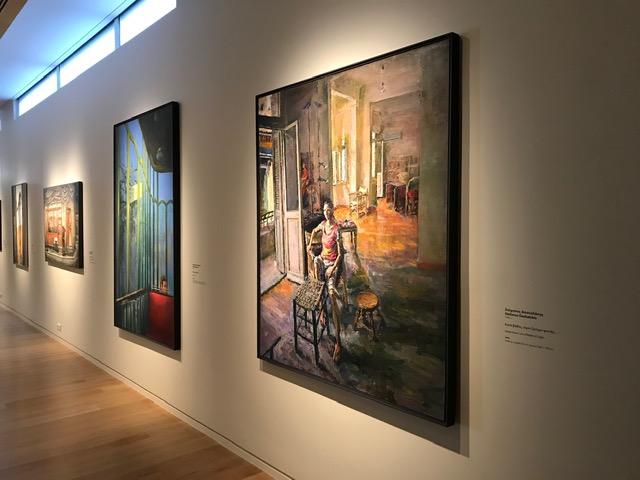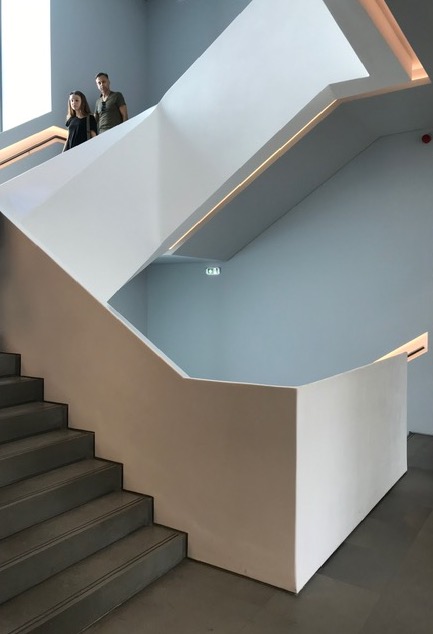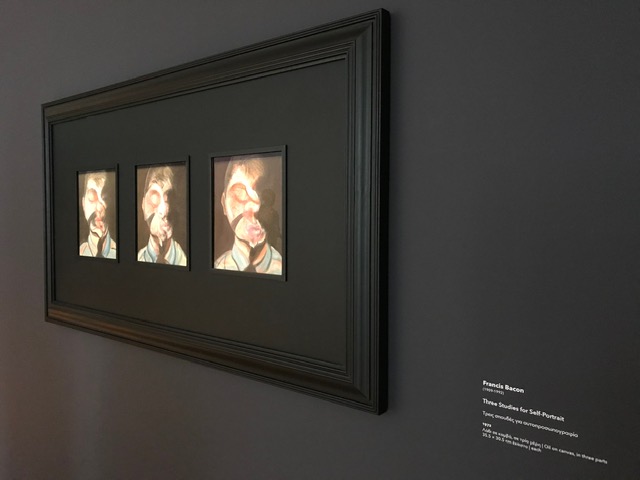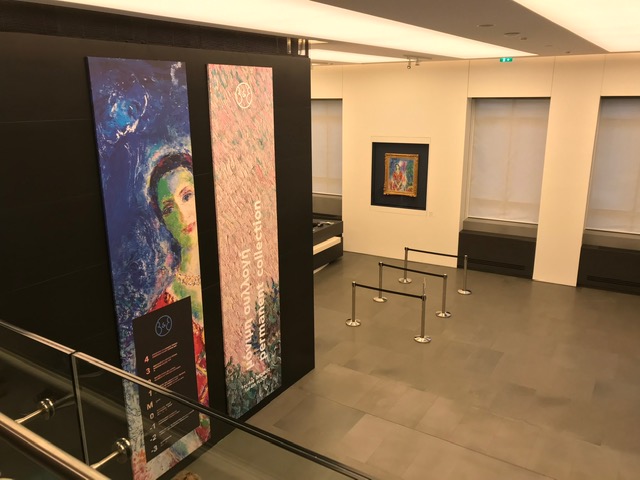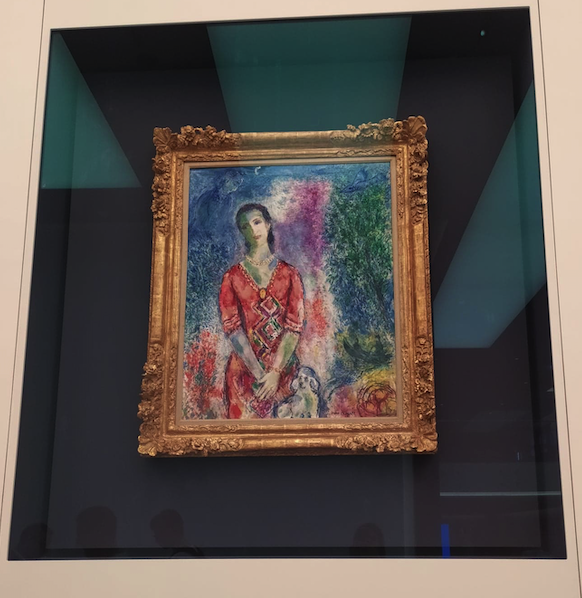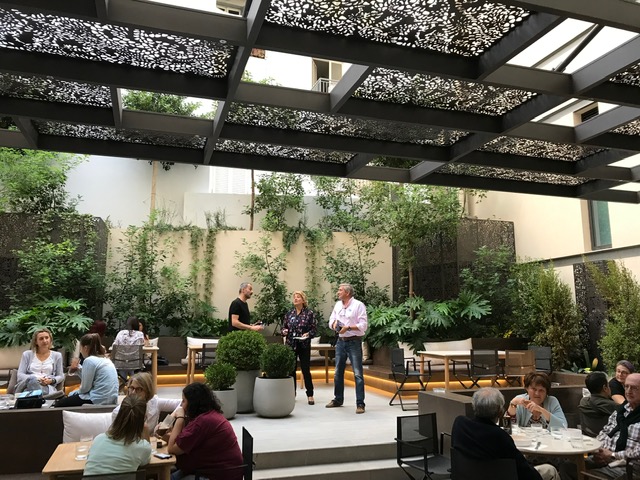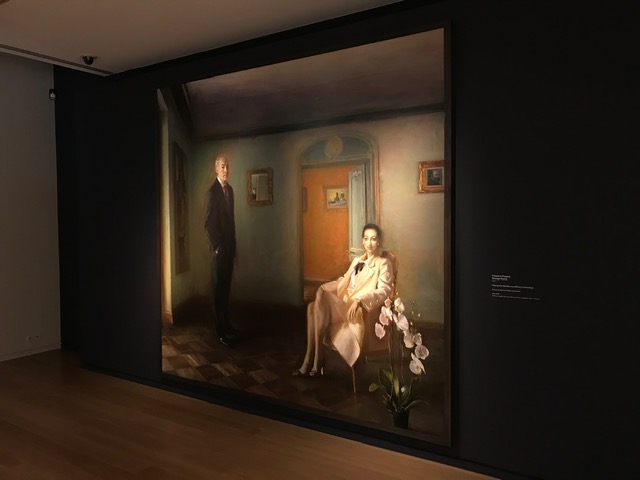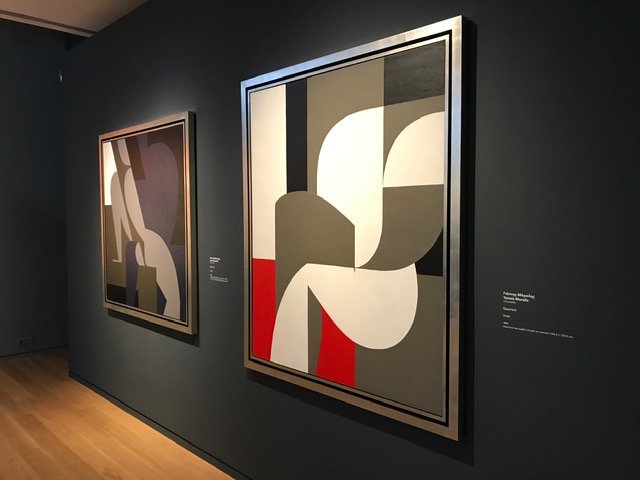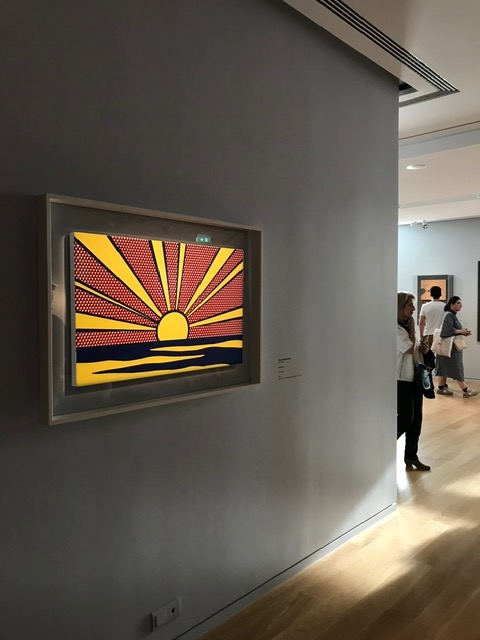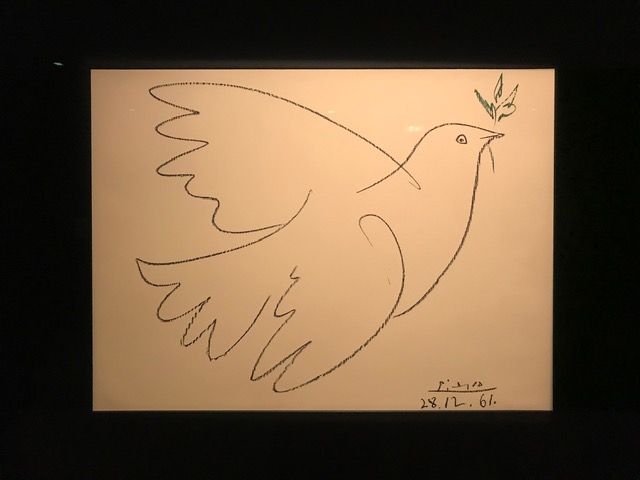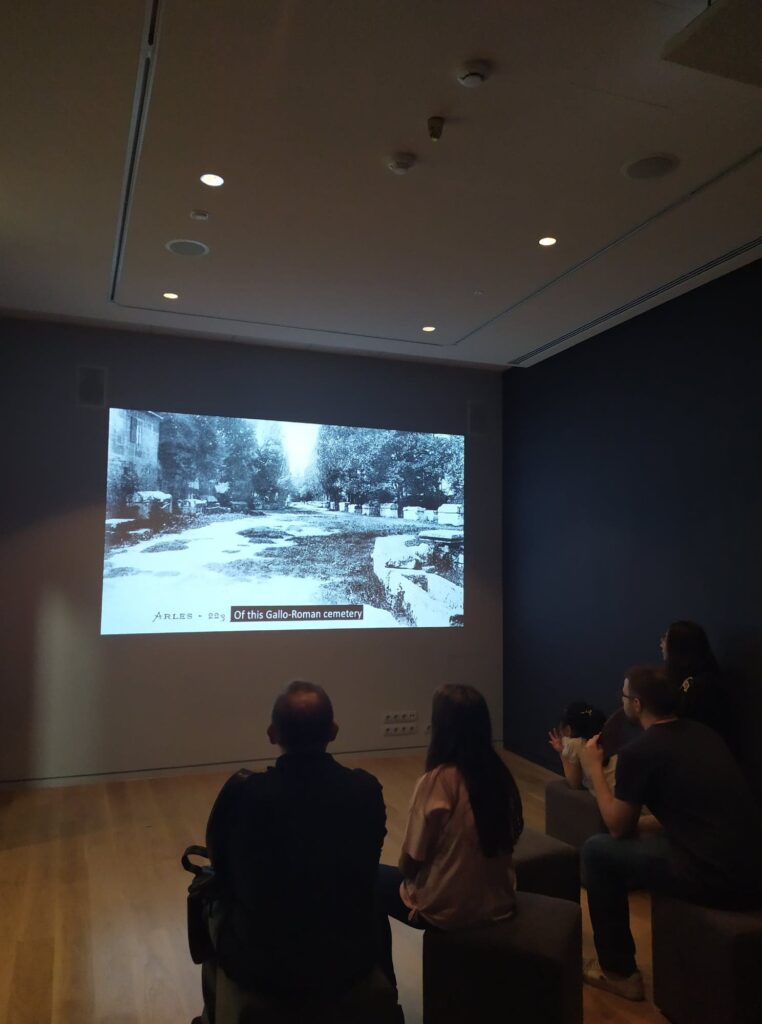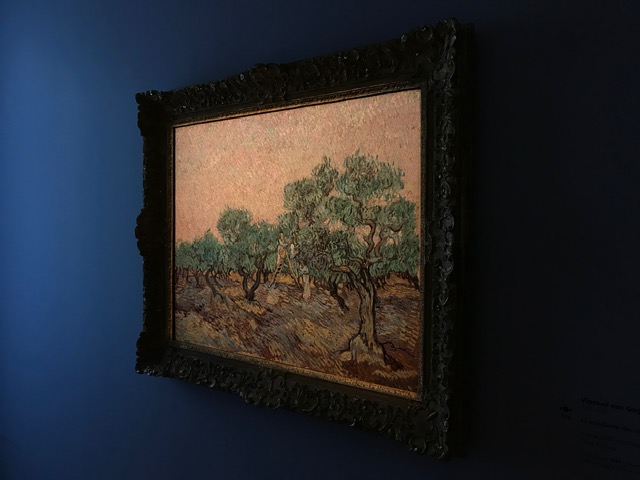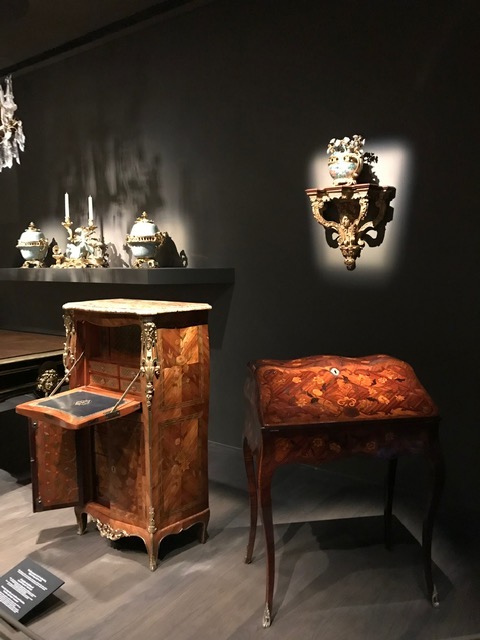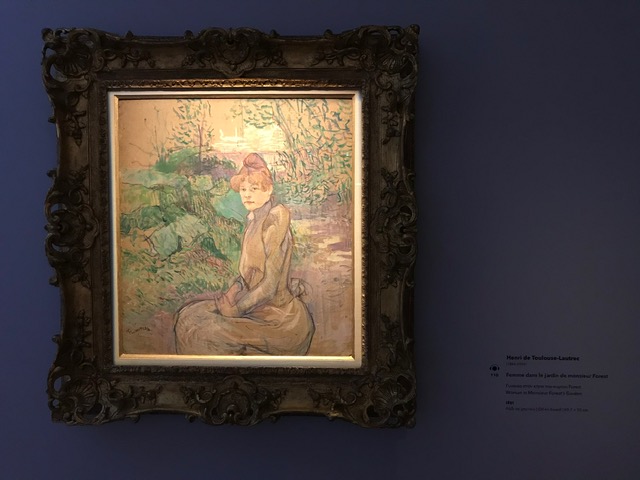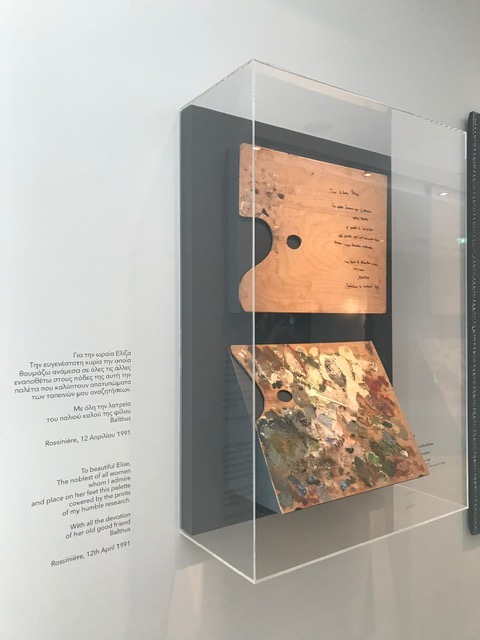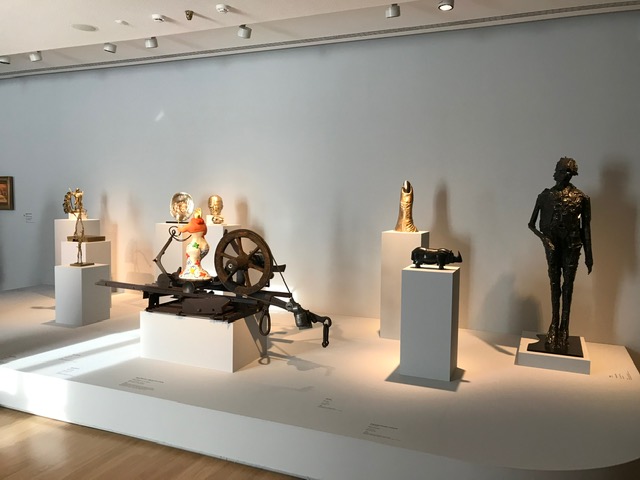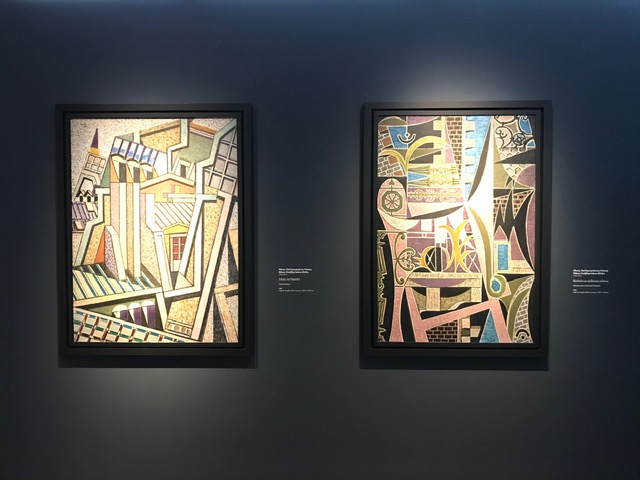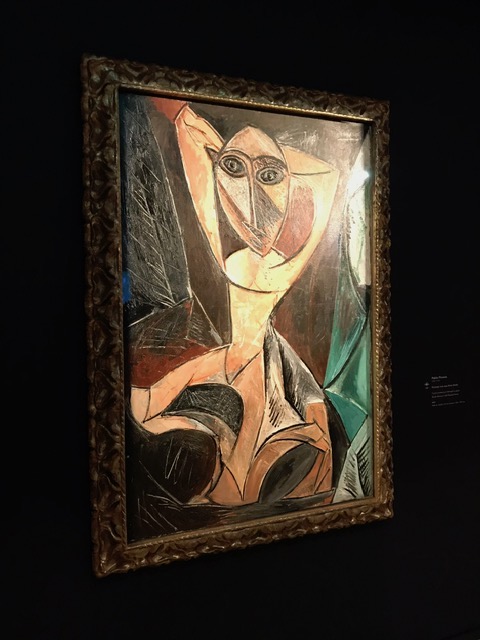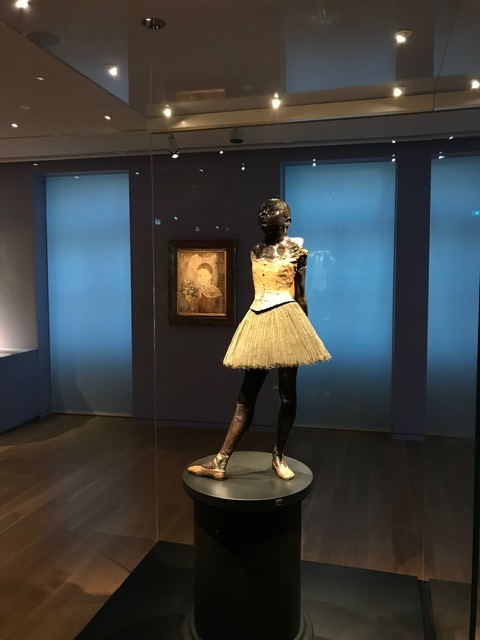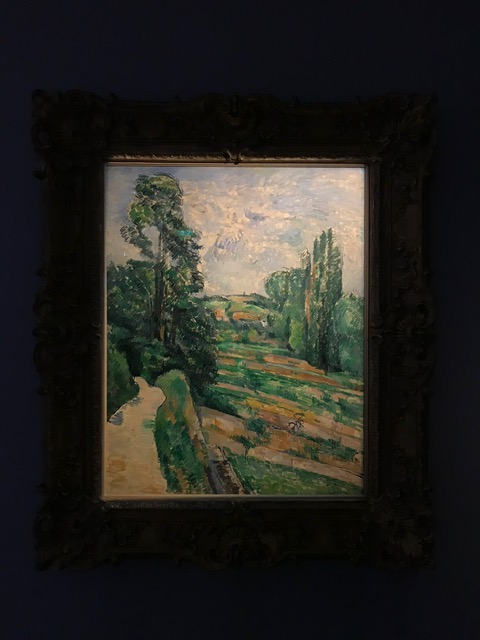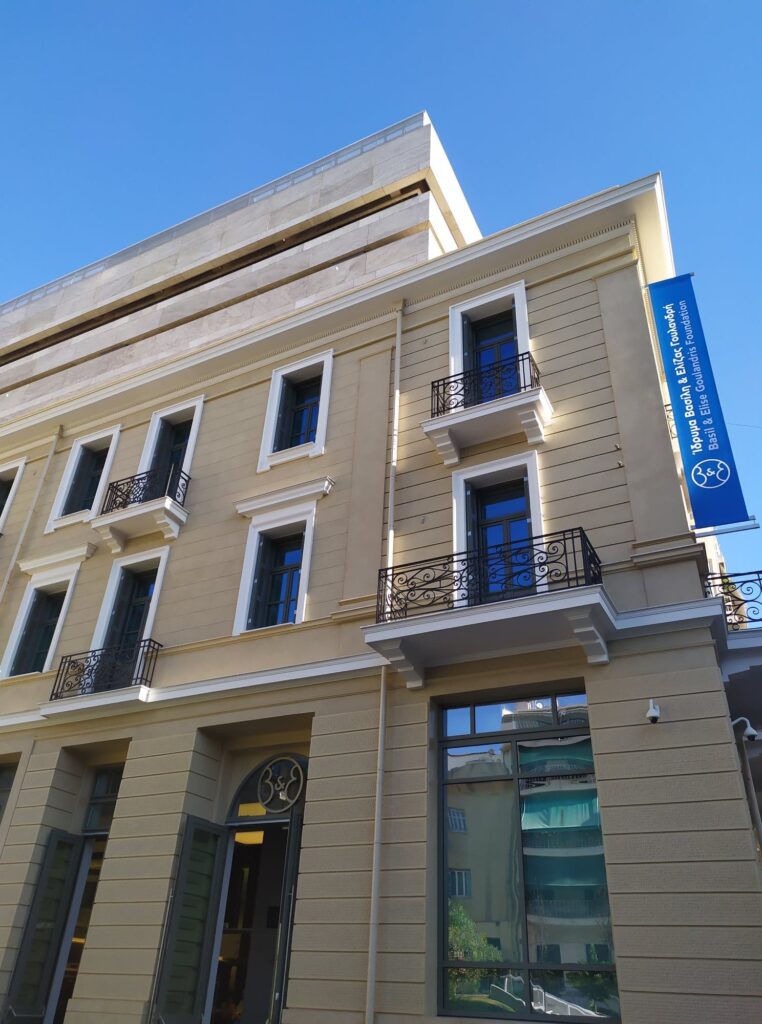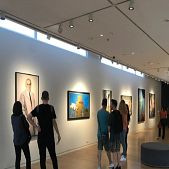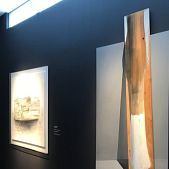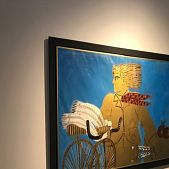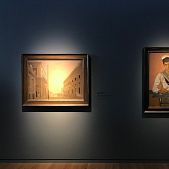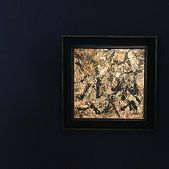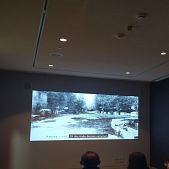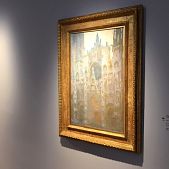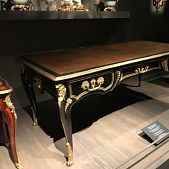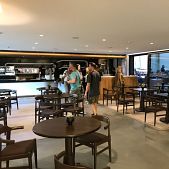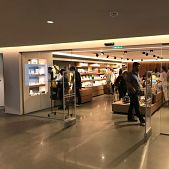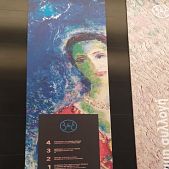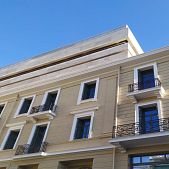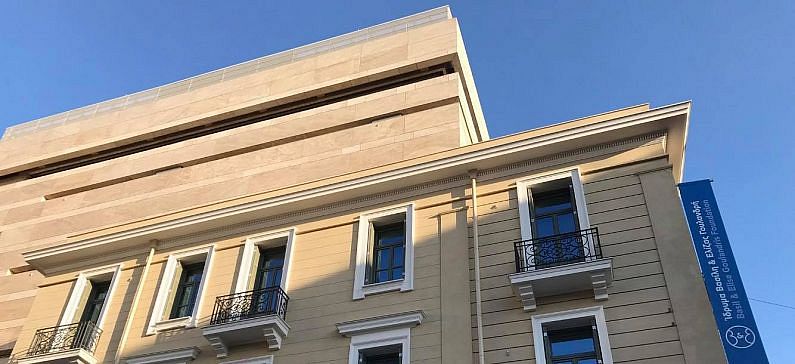
The New Museum of Contemporary Art of the Basil & Eliza Goulandris Foundation
The museum map of Athens was upgraded in early October 2019 in a unique way: The –decades long– search of the Basil & Eliza Goulandris Foundation for a suitable building, in order to host its new Museum of Contemporary Art in Athens, has finished and the end result is now open to the public. It houses the artworks of some of the most important artists in the history of art, all part of a private collection, considered to be one of the most important created in the second half of the 20th century.
This Museum was inspired by Vasilis and Eliza Goulandris, who were distinguished for their passion and love for the arts. Collecting paintings was the main subject of their interests and was what connected them with artistic circles of postwar Paris, while they were also bringing up new Greek artists, helping them to develop their craft and expand their artistic horizons.
Paintings from the 4th floor of the Museum
As with almost every collection, so with this particular, the selection criteria for the works it consists of were completely subjective. Although the Goulandris couple was already since the early 50’s among distinguished art historians, dealers and professionals, chose these works driven solely by its personal preferences and its own aesthetics.
Their desire was to create a Museum in Athens, in order to give the general public the opportunity to get in touch with the art that they loved so much. They envisioned a vibrant cultural body integrated into the trajectory of international visual arts. The result seems to justify them, and it is a pity they are not alive today to receive our gratitude for their incredible offering to our country.
Paintings by Tsarouchis
We visited this new Museum well prepared to see something unique, but what we eventually received exceeded all expectations. It is –without a doubt– Athens’ new “jewel” and, as expected, its first image as we approached it on foot was as impressive as the names we had heard that are included in its collection: Picasso, Van Gogh, Monet, Miro, Lichtenstein and other mythical foreign and Greek artists, such as El Greco, Hadjikyriakos-Ghikas, Moralis, Sorogas and Tsoclis.
The first thing that impressed us in the new building in Eratosthenous street in Pagrati, whose study belongs to the architectural firm I&A Vikelas is that first, externally, someone realizes two different volumes (one is the three-storey pre-WWII building that was on Eratosthenous street and the other is the new multi-storey Museum building that looks like it is rising inside of the old one) while in the interior you are moving-walking into a single, unified space. The new floors are designed to be at the same height as the older ones and are thus integrated. In this way, the total surface area was increased to 7,200 sq.m. and 5 of the 11 floors of the building are located on its underground levels.
The interior staircase of the building
The story of the creation of a suitable building that would house the Athenian Museum of the Goulandris Foundation begins in 1992, when the then government was proposed to provide a suitable space for the collection. The answer was positive, but the next years were full of obstacles. At first, there was the plan for Rigillis street, where during the excavation traces of Aristotle’s Lyceum were found and thus disrupted the process, then they focussed on Rizari Park, where the inhabitants reacted because they reasonably wanted to preserve their “green lung” area full of trees, and finally in 2009, they chose a site in Eratosthenous street in Pagrati, and the neoclassical building next to the church of Agios Spyridonas.
Paintings by Francis Bacon
Then, there were problems with the underground water channels of that area, which brought extra costs that had not been initially calculated, as many bureaucratic delays, and finally the ongoing legal problems between some of the Goulandris family members, that the Goulandris Foundation had to deal with. But, after all that let’s come to the present day, where we will try to put into words our impressions from our visit here, hoping that this article will be the best initiative for you to plan your visit to this wonderful new Museum.
For the construction of this distinctive and impressive building, it took six years, during which twice weekly meetings were held, with the team of architects, structural, scholars, museum curators, lighting and audio consultants. Every section and aspect of it is meticulously taken care of, from the gorgeous illuminated interior staircase that joins the floors to its security doors.
View of the entrance and the ticket office
We were welcomed with a gentle smile from the staff of the Museum, at the bright entrance and at the ticket offices located in the background of the nicely unified open space. There, also, is the first piece of art that the visitors see, a depiction of Eliza Goulandris by Chagall, from the 1970s, when the couple was living in Paris. The French artist, perhaps inspired by her beauty, created a painting consisting of a multitude of colors and gives the feeling that it has finally found the place it (and “she”) deserved, in the capital of her home country. Now, thousands of visitors each year will stand in front of this very special portrait.
Eliza Goulandris in a painting by Marc Chagall
In the new building, four aboveground levels of exhibition spaces are dedicated to the artworks of the collection (two for Greek art, and two for International art) while the ground floor houses the Museum shop. On level -1 periodic exhibitions will be made, while the library with 5,000 art volumes and children’s lab are at -2, and a fully equipped 190-seat amphitheater with a foyer and dressing room (plus projection screen, translation booth, small recording studio and control room with audio console) are on the floor just below. On the other non-visitable levels are the offices, the mechanical installations and other operating areas of the Museum. There are also two coffee-restaurants, one in an atrium-urban garden on the 1st level, and the other on a terrace with views of the Acropolis.
View of the cafe’s atrium-urban garden
We started our walk from the 4th floor of the Museum, as suggested by the person who checked our tickets. It hosts the collection of Contemporary Greek Art, with works from the last few decades, that give an insight into the more recent and modern art scene of our country. We saw the works of Vari, Karela, Sorogas, Fassianos and others. In a prominent position there is an imposing painting, portrait of the Goulandris couple, by George Rorris. All the artworks are very well placed, and the work done on their lighting is top-notch, making them look “alive” as if they were created in front of our eyes today.
The Goulandris couple, in a painting by George Rorris
On the 3rd floor, which is divided into two separate spaces, are works of Modern Greek Art, some of the most important representatives of 20th century artistic creation in Greece and around the world, such as the Parthenis, Hadjikyriakos-Gikas, Tetsis, Tsarouchis and Moralis. The second space, houses large-scale works of Contemporary Art, such as Ed Ruscha, Anselm Kiefer and Takis. We were struck by how many more details and aspects of the works we saw up close than online exploration of the life and work of artist-myths we have occasionally honored with articles on ellines.com.
Paintings by Υiannis Moralis
On the 2nd floor, there are mainly post-war works by Roy Lichtenstein, Giacometti, Hundertwasser, Jackson Pollock and Francis Bacon, who compose a picture of the 20th Century Contemporary Art. Enthusiasts of the “Pop Art” era will no doubt be moved. You will also find a plethora of sculptures, very well placed in the space. Unlike the second space, this one is bathed by sunlight, during daytime.
Painting by Roy Lichtenstein
The separate room next door is dedicated artworks drawn on paper, presenting this aspect of creation as a stand-alone element (by artists such as Picasso, Modigliani, Derain, De Chirico Matisse and Braque, as well as two double works of Balthus in the center, where the exquisite lighting makes them beautifully stand out from the darkness of the surrounding space.
Painting by Picasso
There is also a space for short documentary screenings that provide information on the individual projects in the collection. At the time of our visit, almost all the seats were full, which says a lot about the interesting content of these videos, which we unfortunately did not see due to our limited time schedule.
The 1st floor of the Museum, which was the last in a row open for a visit on the day we were there, is dedicated to the Modern Art Classics, with works from 1870 to 1945, a period during which it was born and developed. Modernism in Europe. The only exception is Dominican Theotokopoulos, El Greco, since the particular work exhibited there, titled “The Divine Form”, dates back to the 1580s.
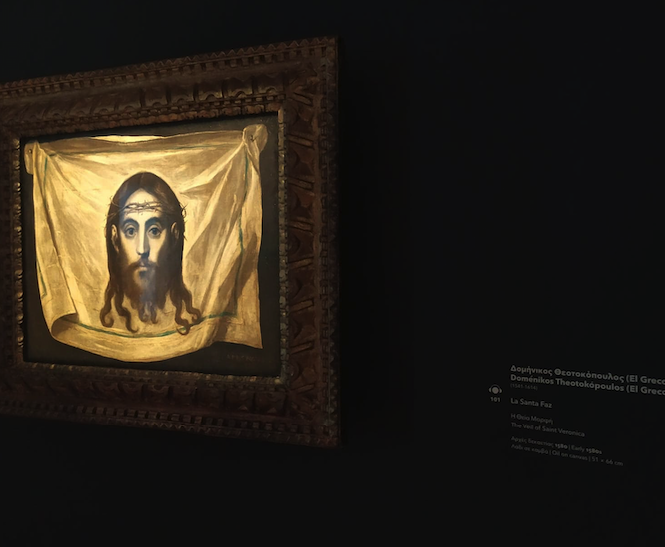 El Greco‘s “Divine Form” painting
El Greco‘s “Divine Form” painting
As a precursor to Modern Art, El Greco’s overall work is co-existing and “speaks” with typical paintings and sculptures by Vincent Van Gogh, Paul Cezanne, Gauguin, Monet, Degas, Picasso, Rodin and others, many of whom acknowledged his contribution to Modernism in art. Each of these projects deserves some time and attention from the visitor, in to absorb and keep as much of their magic as possible.
Painting by Van Gogh
The second separate, and with a different appearance, space is dedicated to the Goulandris Foundation’s significant collection of French furniture, while some specific pieces were owned by King Louis, made and signed by the most famous furniture makers of the time, as well as art objects from the 18th century, and some porcelain and jade Chinese artefacts.
Furniture and artefacts from the collection
Walking in front of the showcases of the four exhibition floors is like reading a hefty Art History book that contains the most important artists’ signatures of past centuries, only that these pieces of art are not just found in a book, but are live and untouched by time in front of you. We were able to approach them and observe them in every detail, which unfortunately, or maybe thankfully, no camera can capture. What we have seen and what each visitor sees is incomparably better engraved in his mind and heart.
Painting by Toulouse Lautrec
Director of the new Museum and also head of the Foundation’s first homonymous Museum in Andros is Mr. Kyriakos Koutsomallis, who has been associated with the Goulandris family since ’68 when he went to France to study History and History of Art. Within a short time of his acquaintance with the couple Goulandris, Basil and Eliza appreciated his character and knowledge, and hired him. His writing skills in both Greek and French were excellent, and he was also keeping them informed about all the cultural and artistic events taking place in Paris. Gradually, the ever-expanding Greek collectors entrusted him with the care of their collection, from recording and taking care of the works, to their exchanges in various auctions and exhibitions.
Balthus painting palette, a gift with dedication to Eliza Goulandris
They had close friends who were painters, sculptors and artists of all kinds, writers, as well as all great names of the time, such as Maria Callas and Michael Barisnikov, Andragal Breton, Cesar and Balthus, Tsarouchis and Bouzianis. In the dinners they did back then, there was a very interesting and productive mix of people. In the same room, prominent people of the arts and letters, ship owners and operators, co-existed and were having lunch, giving birth to very interesting discussions about art, politics, philosophy and everything else imaginable.
Sculptures from the collection
We could reasonably assume that Vasilis and Eliza Goulandris were “born for art” – and that may be the main reason that the two got married. They first met in the 1950s in New York, where Eliza was studying, and Basil –a prominent and hyperactive businessman– had taken over the family wheel, after the premature death of his older brother. The couple fell in love, got married and became lovers of art, artistic creation and culture. Their free time was divided into museums and exhibitions, operas and theatrical performances or music events, they sponsored cultural events, and supported young artists in their early days, activities that continued without interruption until their deaths.
Paintings by Hadjikyriakos-Gikas
Thus, with much –and lifelong– effort and, of course, meticulous research per artwork, they acquired from auctions that took place mainly in New York, London, and other cities, the stunning works that now make up a mythical collection, which will now be introduced for the first time in its entirety. These are 800 labels, which include 200 works by foreign artists and about 400 by Greeks – a total of which foreign experts and journalists have recently estimated at $ 3 billion. Of these 800 works of art, about 180 will be exhibited annually in the new Athenian Museum.
Painting by Picasso
Basil and Eliza Goulandris believed that art is a spiritual good, and applies to everyone. The aim of the Foundation has been, and still is, to develop cultural awareness and identity, but in a spirit of openness. The Foundation also wants the Museum to appeal to everyone, that no one is to be “left out”, and it also wants to integrate refugees, immigrants and generally socially vulnerable groups through educational programs. It is worth noting that among the younger Greek artists’ section, there is the largest variety of the Foundation’s collection, so every year all the artworks will change, giving their place to others and consequently the opportunity for multiple visits to the Museum.
Bronze ballerina, sculpture by Edgar Degas
As Mr. Koutsomallis had previously stated, the aim is “social freedom: in whatever social class we belong to be equal”. This was, of course, the fixed position of the founders of the Foundation. To them, art was not about the social “elite”, but for all the people, regardless of social status and country of origin, as it is a spiritual good addressed to educated and uneducated, young and old, initiated and unaware of it. Every person can interpret a work of art differently, depending on their experiences, after all, and don’t be surprised to find visitors so excited and moved that it’s impossible to hold back their tears caused by the intense feeling they just had.
Painting by Paul Cézanne
It is true that the end result justifies the long-awaited arrival for this “gift” to Athens. With our visit in the new Museum of Contemporary Art of the Basil & Eliza Goulandris Foundation, we have gained images and emotions that will accompany us for a long time to come. We are fortunate as citizens, that a new, important and wonderful chapter in Athenian everyday life has opened, and we look forward to visiting it many times in the future, looking with awe and emotion at artworks that will forever define contemporary art and the greatness of their creators.
Museum of Contemporary Art of the Basil & Eliza Goulandris Foundation
Eratosthenous 13, Pagrati 2107252895 | Mon-Fri: 10am-6pm, Fri: 10am-8pm Closed Monday General admission: 8 €, reduced ticket: 6 € (persons over 65, children, adolescents 12-17 years, students, unemployed, serving their military service).

